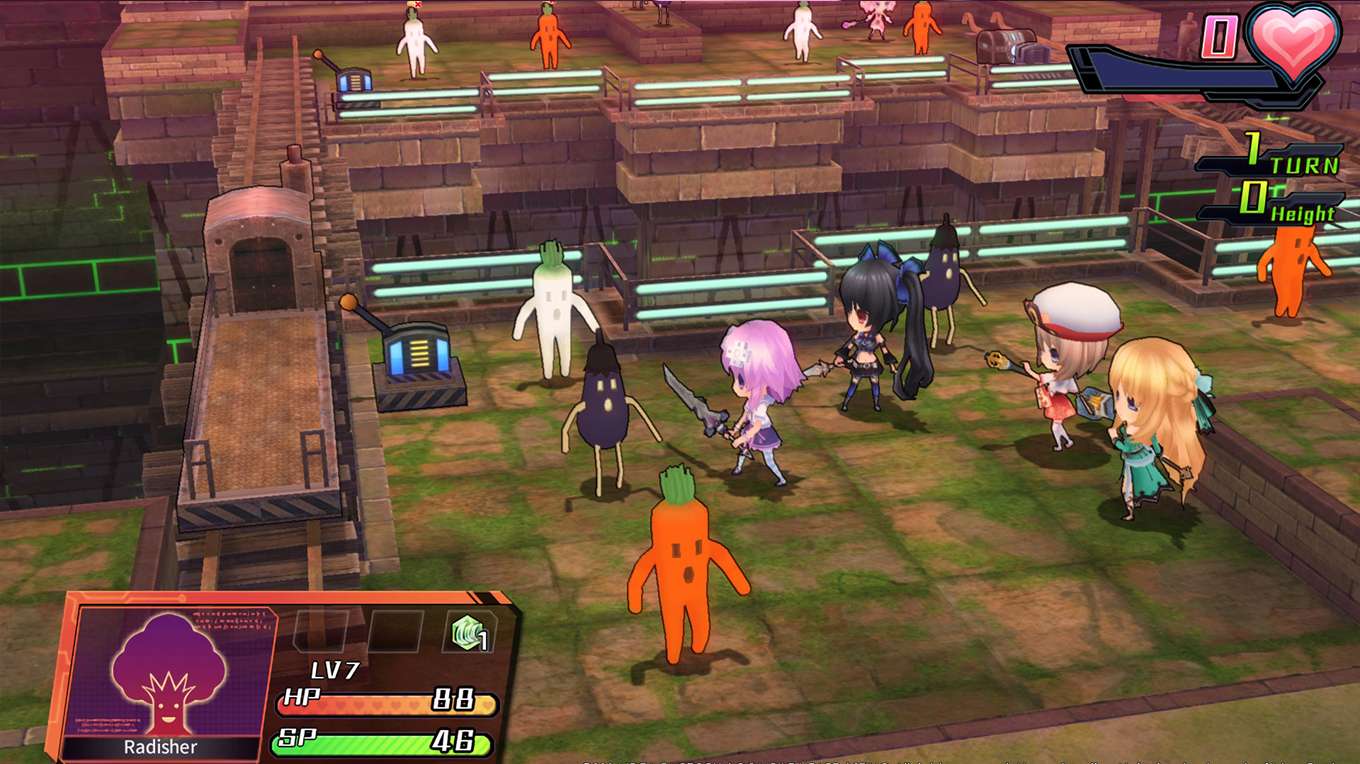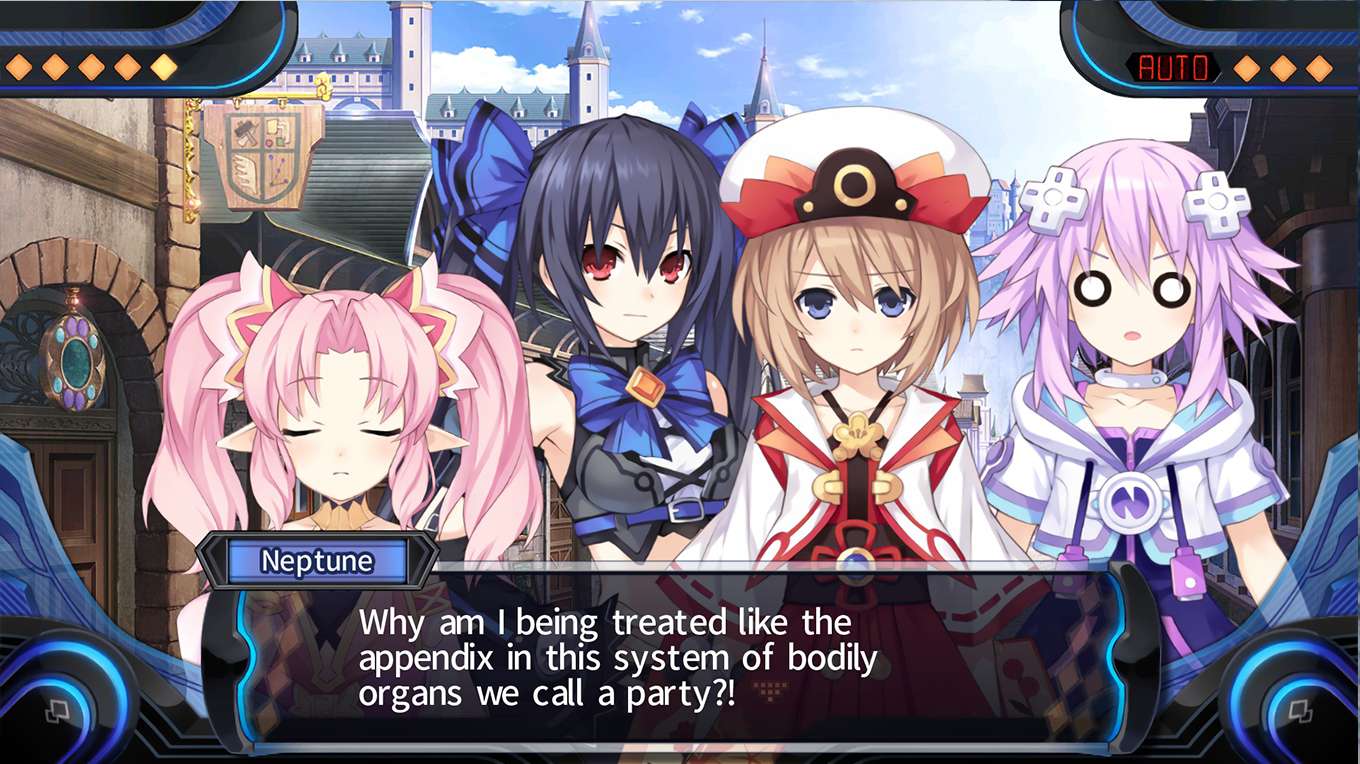
Hyperdevotion Noire: Goddess Black Heart PC Review
More annual releases than Assassin’s Creed! More spinoffs than Final Fantasy! More maintained fan base than Call of Duty! It’s another month, and another Neptunia game to cover, as the Nep-Nep hurricane continues to decimate every gaming landscape there is until only Nep is left!
Hyperdevotion Noire: Goddess Black Heart is yet another PC release of a Neptunia game that previously debuted elsewhere, with the original source being the PlayStation Vita. Hyperdevotion is notable for trying out a few things differently, though: it’s the first Neptunia game to feature another CPU as the main character (not counting Neptune’s sister Nepgear, who is in fact a CPU Candidate…as you can see, I have been fully indoctrinated in the lore of the Neptunia universe). The heroine in this game is Neptune’s rival/tsundere bestie Noire, who is the personification of Sony’s PlayStation brand, in case the name of her governed city wasn’t enough to clue you in (Lastation). As Noire sits pretty on top of the ongoing feud between herself and the other CPUs, a mysterious woman (who is not so mysterious to Nep players at this point) makes a Faustian bargain that dethrones Noire of her status as well as causing her once-loyal generals to mutiny. With her dominance shattered, Noire must rely on Neptune and the others to round up her generals and win back the city of Lastation.

Though Hyperdevotion Noire does prominently focus on the black-haired heroine, players will actually assume the role of an unnamed, unseen male character who serves as Noire’s secretary, as well as the main player avatar. This shift to the characters directly acknowledging the the player creates an unnecessary and often uncomfortable perspective that feels like a cheap dating sim, even though players have no real direct influence over the main story (though there is a mechanic where the player can choose dialog options to help Noire sift through random requests by citizens, which in turn results in affinity points that can be redeemed for funiture…don’t ask). Rather than having the confidence to let the CPUs carry the story as they normally do, this Marty Stu avatar is constantly commended for his reliability and devotion, which feels like pandering without the typical Neptunia punchline. On the subject, this spinoff also proves that Neptune continues to be the highlight of the main cast, as her one-liners and goofball antics take center stage even when she isn’t the main character (which in itself is also a running joke in this game).
The other unique aspect to Hyperdevotion Noire is the shift from traditional turn-based RPG gameplay to a traditional turned-based Strategy RPG; similar to classic SRPGs like Disgaea and Final Fantasy Tactics, Hyperdevotion features mission-based objectives where players control Noire and her allies on a grid-based map to accomplish specific objectives, usually in the form of eliminating every enemy on the opposing side. Players select a party member, where they are then given a limited number of moves followed by a single action, be it an attack, a special move, lifting objects, etc. Once all party members have taken their turn, the opposing side follows suit. As with most SRPGs, positioning plays a huge role and can make all the difference between victory and defeat, which is why it’s a good thing that Hyperdevotion lets players reposition themselves as many times as needed until they end their turn.

It’s just too bad the rest of the game mechanics aren’t as streamlined. Even on the Vita, Hyperdevotion Noire had some choice decisions regarding its controls; for one thing, the right analog stick can only be used to zoom in and out of the map, but does not allow for camera rotation. When changing the position of a party member, two buttons must be held down before finalizing the action. Most frustrating of all is the inability to highlight enemies to see their individual ranges of attack, which makes one mission involving long-range cannons feel especially infuriating. Even worse is the inability to leave a mission in order to grind more levels/items elsewhere; should players overwrite their save during a battle, they are stuck in that battle until they finish. While the game does allow the option to restart battles in an easier setting, this is nowhere near as useful as being allowed to leave an outclassed objective entirely.
While Neptunia games have benefitted from higher resolutions and framerates when ported to PC, Hyperdevotion Noire fails to improve much from its handheld origins. The texture quality may be a bit sharper, but it’s ultimately unnoticeable from the simplistic super-deformed art style. What is noticeable, however, is the lack of 60 frames per second. Instead, the game hard locks at 30 fps, but even that can fluctuate occasionally. Framerate speed may not be as big a deal for some, but it would have resulted in a significantly smoother looking game. Much more infuriating is the ever-annoying PC port that leaves its mouse cursor on the screen even when playing with a controller, and Hyperdevotion has an even bigger annoyance where creating discs through its disc development shop forces players to name the disc with a keyboard. It’s rather upsetting that to this day, many publishers still haven’t fully grasped the concept of PC gaming through a controller and a comfy couch.

All in all, Hyperdevotion Noire is a decent sidetrack from the standard Neptunia games, but it could have used a bit more streamlining and quality-of-life mechanics to bring it up to current SRPG titles. It also fails to take advantage of the PC platform to improve its performance, with a few controller-unfriendly quirks that hinder it further. Still, fans will no doubt be able to look past the technical annoyances to enjoy more slapstick and fanservice with the Neptunia girls, while the rest of us may be better off looking elsewhere.
